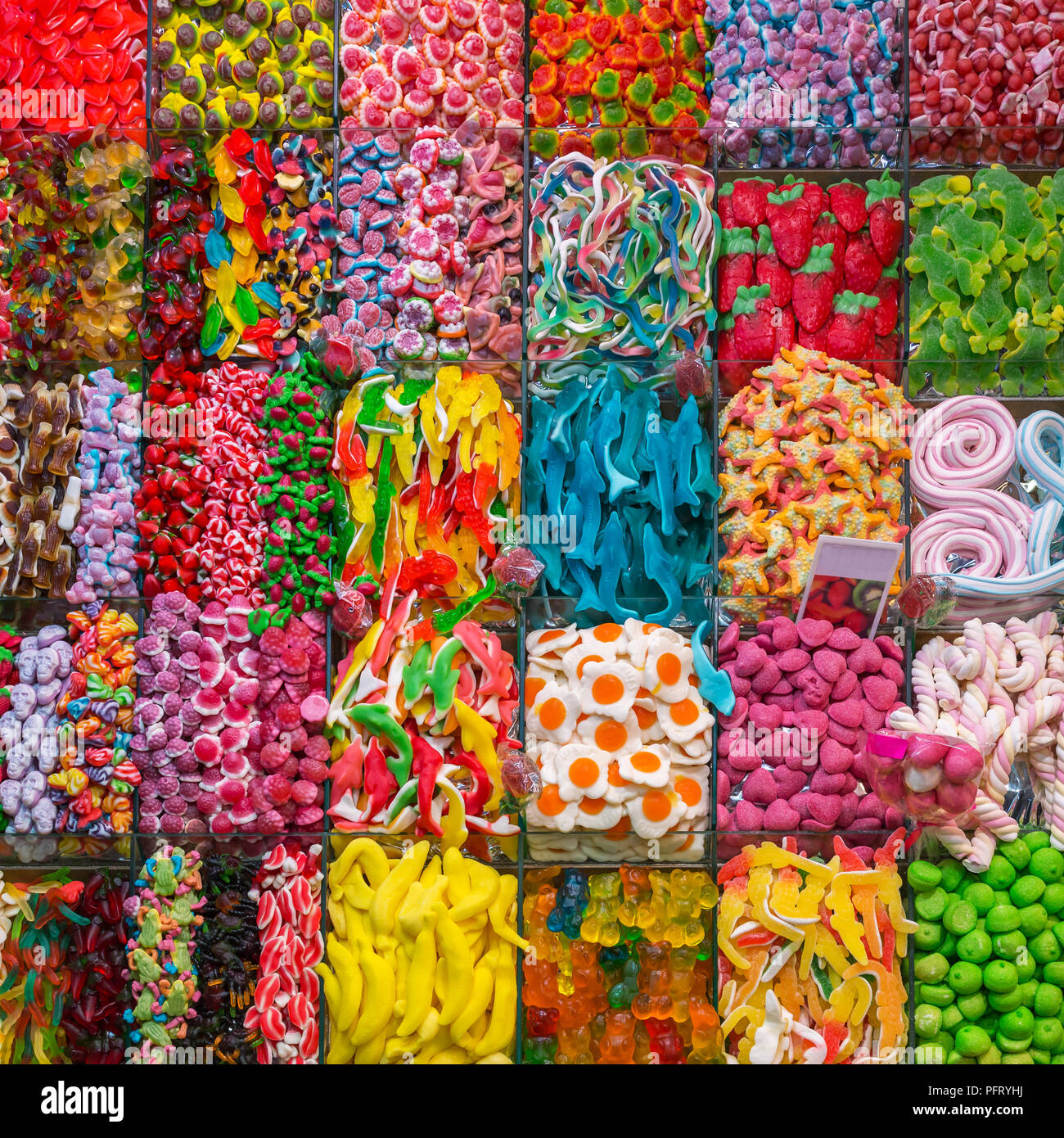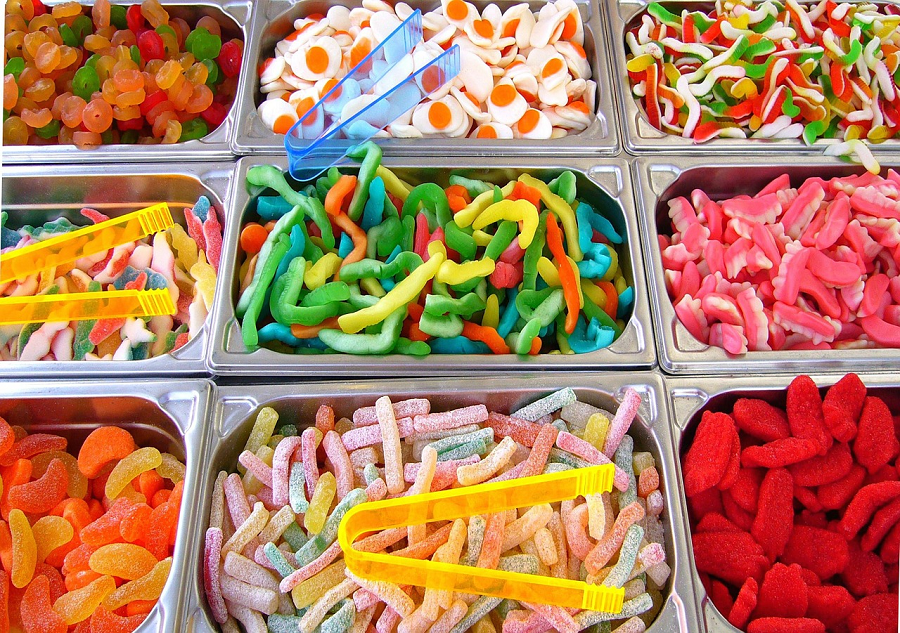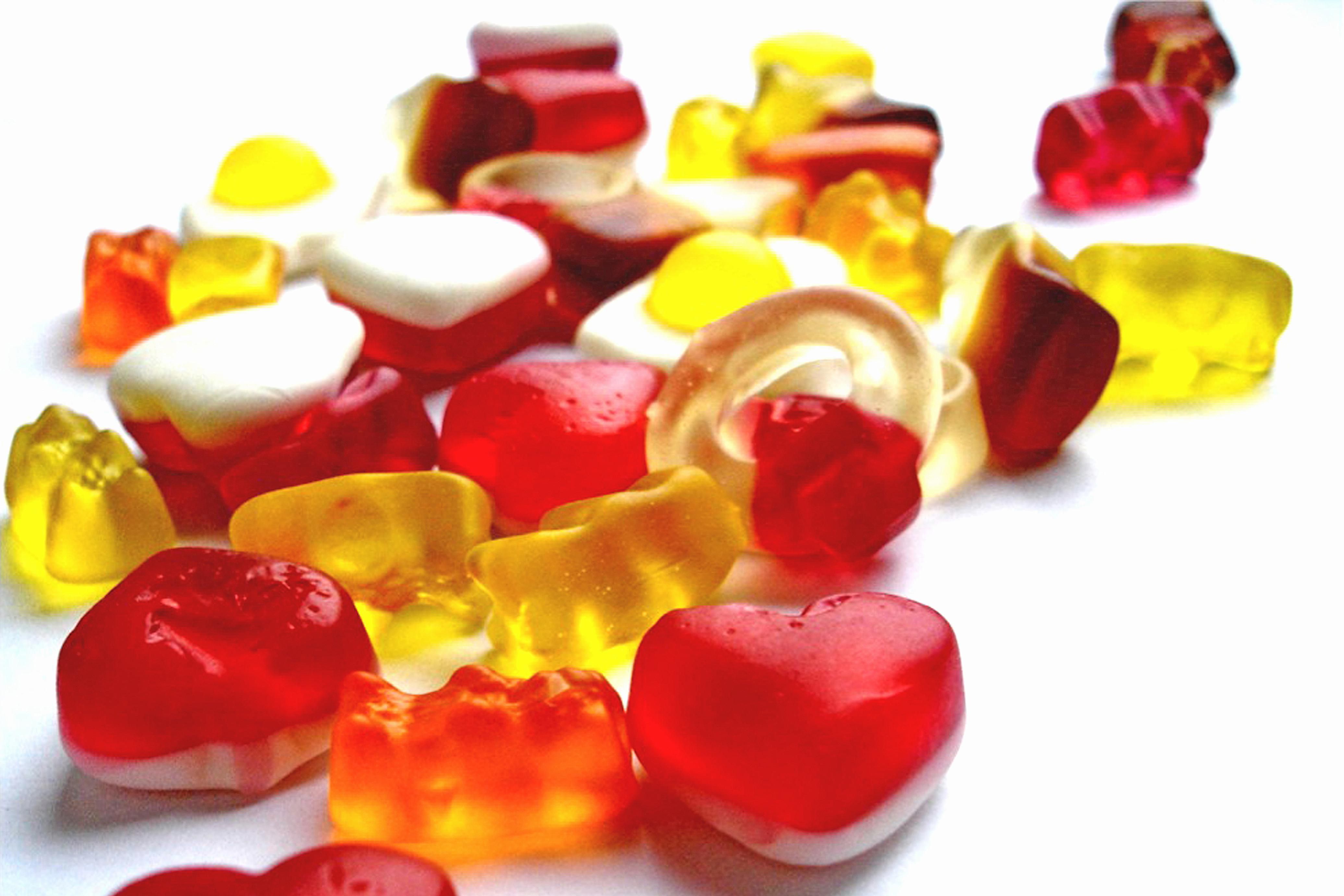Gummy candy, with its chewy texture and variety of flavors, has become a beloved treat worldwide. From classic gummy bears to the more innovative gummy foods, these gelatin-based candies have found a place in the hearts of many. But what exactly are gummy candies, and what makes them so irresistible? This article dives deep into the world of gummy candy, exploring its history, ingredients, and the variety of options available on the market today.

What is Gummy Candy?
Gummy candy, also known as gummies, are chewy sweets made from gelatin, sweeteners like sucrose or corn syrup, and flavorings. The first gummy candy, the iconic gummy bear, was created in Germany in the 1920s by Hans Riegel, the founder of the Haribo company. Since then, gummy candy has exploded in popularity, evolving into a wide range of shapes, flavors, and types, including gummy worms, cola bottles, and even gummy vitamins.
Ingredients of Gummy Candy
The main ingredients in gummy candy include:
- Gelatin: This is the key component that gives gummy candy its characteristic chewy texture.
- Corn Syrup and Sugar: These sweeteners provide the necessary sweetness and structure to the candy.
- Flavorings and Colorings: Gummy candies come in a wide variety of flavors, often fruit-based, with vibrant colors to match.
- Citric or Malic Acid: To add a sharp, tangy flavor to sour gummies.
Many modern gummy candies have adapted to consumer demand for healthier options, including vegan gummies, which use plant-based ingredients like pectin instead of gelatin.
Types of Gummy Candy
With such a broad range of gummy candy available, it’s impossible to list them all. However, here are some of the most popular types:
1. Gummy Bears
The classic gummy candy, gummy bears are typically small, bear-shaped treats that come in fruity flavors like cherry, lemon, and orange. Haribo’s original gummy bear remains a global favorite.
2. Gummy Worms
Gummy worms are a popular choice, especially among children. They often come in sour or sweet varieties and are fun to eat due to their playful shape.
3. Sour Gummies
Sour gummies, coated in sugar and citric acid, deliver a mouth-puckering tartness. Popular examples include Sour Patch Kids and sour gummy worms.
4. Gummy Rings
Gummy rings are typically flavored with peach or apple, offering a delightful blend of chewy texture and fruity sweetness.
5. Novelty Gummies
In addition to traditional shapes like bears and worms, novelty gummies have taken the market by storm. These include gummy pizzas, gummy burgers, and even gummy sushi, turning a simple candy into an edible, playful art form.

The Global Appeal of Gummy Candy
Over the decades, gummy candy has transformed from a niche product into a worldwide phenomenon. Brands like Haribo, Albanese, and Sugarfina have pushed the boundaries of gummy innovation. Sugarfina, for example, is known for its luxury gummies, including champagne-flavored gummy bears and rosé-infused gummies.
In the United States, Albanese Candy offers a wide range of gummies with intense flavors, soft textures, and vibrant colors. Their 12-flavor gummy bears are a favorite among gummy enthusiasts. Meanwhile, Walmart and Amazon provide an extensive selection of bulk gummy candies, catering to consumers looking for affordable, high-quality treats.
Are Gummy Candies Healthy?
One of the most frequently asked questions is whether gummy candies are healthy. Gummy bears, for instance, are largely composed of sugar and gelatin, providing minimal nutritional value. A typical serving contains around 150 calories with little to no vitamins or minerals. While they are a fun treat, they should be consumed in moderation.
However, there are alternatives for those looking for healthier options. Sugar-free gummies and gummies with added vitamins offer a slightly healthier twist. Vegan gummies also provide a cruelty-free option for those avoiding animal-based gelatin.

Gummy Candy in Popular Culture
Gummy candies have become a staple in popular culture, often making appearances in movies, TV shows, and even viral internet challenges. The famous “Gummy vs. Real Food Challenge” on platforms like YouTube has drawn millions of views, where participants compare real food to its gummy counterpart. The creativity surrounding gummy candy has expanded its influence far beyond the candy aisle.
The Future of Gummy Candy
As the candy industry continues to evolve, so too does the world of gummy candy. With advancements in food technology and changing consumer preferences, we can expect to see more functional gummies—candies infused with ingredients like CBD, collagen, or probiotics that offer health benefits beyond just a sugary treat.
The growing demand for clean-label gummies, which are made without artificial colors or flavors, is another trend shaping the future of the gummy market. Brands like SmartSweets and Project 7 are pioneering the movement by offering low-sugar, all-natural gummies that cater to health-conscious consumers.
FAQs About Gummy Candy
1. What is in a gummy candy?
Gummy candy is made primarily from gelatin, sugar (or corn syrup), flavorings, and colorings. Some gummies also include acids like citric acid to add a tangy taste. Vegan versions replace gelatin with plant-based alternatives like pectin.
2. Are gummy candies healthy?
Gummy candies are generally not considered healthy due to their high sugar content and lack of essential nutrients. However, there are healthier options available, such as sugar-free gummies and gummy vitamins.
3. Is it spelled gummy or gummi?
Both spellings are used. Gummi is the original German spelling, while gummy is more commonly used in English-speaking countries.
4. What’s the difference between jelly candy and gummy candy?
The key difference lies in the ingredients. Gummy candy is made with gelatin, giving it a chewy texture, while jelly candy often uses pectin or starch, resulting in a softer, more solid texture.
5. What are the most popular gummy candy brands?
Popular gummy brands include Haribo, Albanese, Trolli, Sour Patch, and Black Forest. Each brand offers a unique spin on gummy candies with varying flavors, textures, and shapes.
6. Can gummy candy expire?
Yes, gummy candy can expire. Over time, gummies may become harder and lose their flavor. It’s best to store them in a cool, dry place and consume them before the expiration date.
7. How is gummy candy made?
Gummy candy is made by mixing gelatin, sweeteners, and flavorings, then pouring the mixture into molds. After setting, the gummies are coated with oil or wax to prevent sticking.
8. Can I make my own gummy candy at home?
Yes! Homemade gummies can be made using gelatin, fruit juice, and a sweetener. There are also many vegan recipes that use pectin or agar-agar as a gelatin substitute.
Conclusion
Gummy candy has earned its place as one of the world’s favorite treats, thanks to its versatility, variety, and sheer fun factor. Whether you enjoy classic gummy bears or adventurous sour gummies, there’s no denying that these chewy confections bring joy to people of all ages. With the rise of healthier options and innovative flavors, the future of gummy candy looks sweet and exciting!